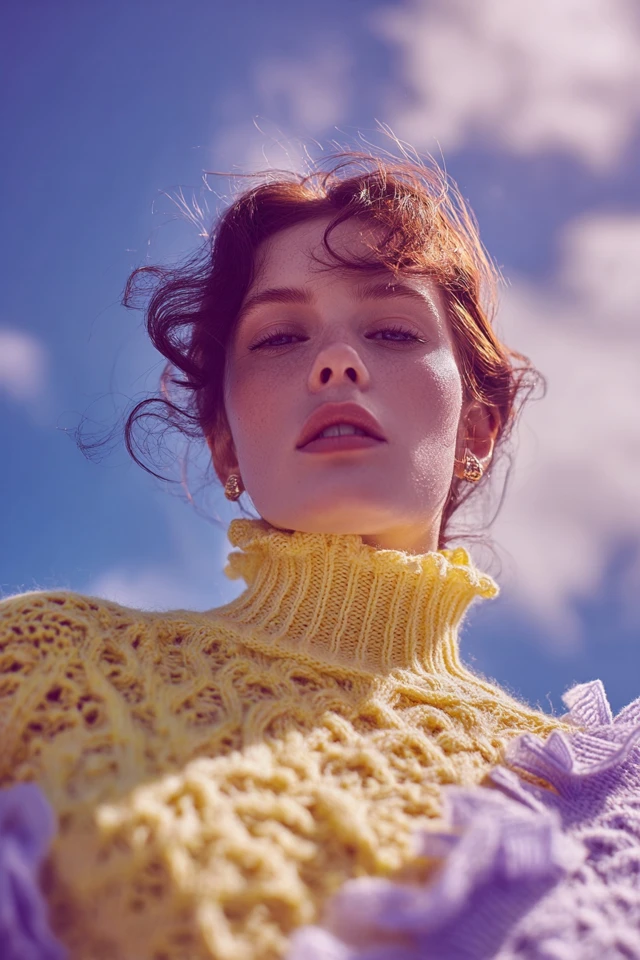Introduction
On a crisp autumn morning, I found myself reaching for a soft, cream-colored turtleneck sweater—a piece both familiar and comforting. As I slid it over my head, I noticed how the smooth fabric and snug neckline seemed to elevate not only my outfit but my mood. It struck me how this simple wardrobe staple encapsulated the essence of cottagecore’s effortless blend of nostalgia and modern sensibility. That quiet moment revealed a powerful truth: fashion, when thoughtfully curated, has the ability to mirror our inner selves and shape how we are perceived by the world.
My journey into understanding the cottagecore turtleneck began with a desire to merge practicality with poise, softness with structure. This balance is especially relevant now, as we seek clothing that offers comfort without sacrificing style or self-assurance. The turtleneck, with its timeless silhouette and cozy appeal, stands as a versatile cornerstone for those drawn to the romantic, nature-inspired aesthetic of cottagecore. Yet, there’s more beneath the surface—how color choices, fabric textures, and layering can profoundly impact personal confidence and social impressions.
About the Author and My Trend Boutique
In this post, I’m excited to share an in-depth exploration of the effortless cottagecore turtleneck wardrobe basics. Drawing from my background in fashion design and color psychology, I will guide you through foundational concepts, color insights, body type considerations, and current trends. Whether you’re a seasoned enthusiast or newly curious, this comprehensive guide aims to empower your style journey with practical tips and thoughtful reflections—because dressing to impress starts with dressing to express your true self.
Foundational Concepts
Understanding the cottagecore turtleneck wardrobe requires a grasp of several core ideas that intertwine fashion, psychology, and cultural trends. Let’s unpack these foundational concepts to set the stage.
Color Psychology
Color psychology studies how hues influence emotions, behaviors, and social perceptions. For example, soft pastels like sage green or dusty rose, often found in cottagecore palettes, evoke feelings of calmness, warmth, and nostalgia—perfect for creating an inviting, approachable presence. Research in environmental psychology shows that warm colors can increase positive social engagement, making color selection far more than just aesthetic.
Trend Forecasting
Trend forecasting is the method experts use to anticipate future popular styles and colors based on cultural shifts, technology, and consumer behavior. Cottagecore itself emerged as a reaction to fast fashion and hyper-urban lifestyles, celebrating slow living, nature, and simplicity. By identifying these patterns, we can integrate trending elements without sacrificing individuality or timeless elegance. Embracing a turtleneck with a subtle cable knit or raw-edge finish, for instance, unites rustic charm with contemporary appeal.
Dressing to Impress
The phrase often conjures images of formal attire and rigid rules, but true dressing to impress is about intentionality—choosing garments that elevate your confidence and communicate authenticity. The cottagecore turtleneck is uniquely suited to this because it offers versatility: it can convey intellectual charm in a tailored blazer or soft femininity under a flowy pinafore. Understanding how to calibrate style for different occasions fosters both social ease and self-respect.
These foundational concepts reveal that successful cottagecore dressing is more than copying a look—it’s about harnessing psychology, cultural knowledge, and personal authenticity to craft a wardrobe that supports who you are.
Picture Gallery
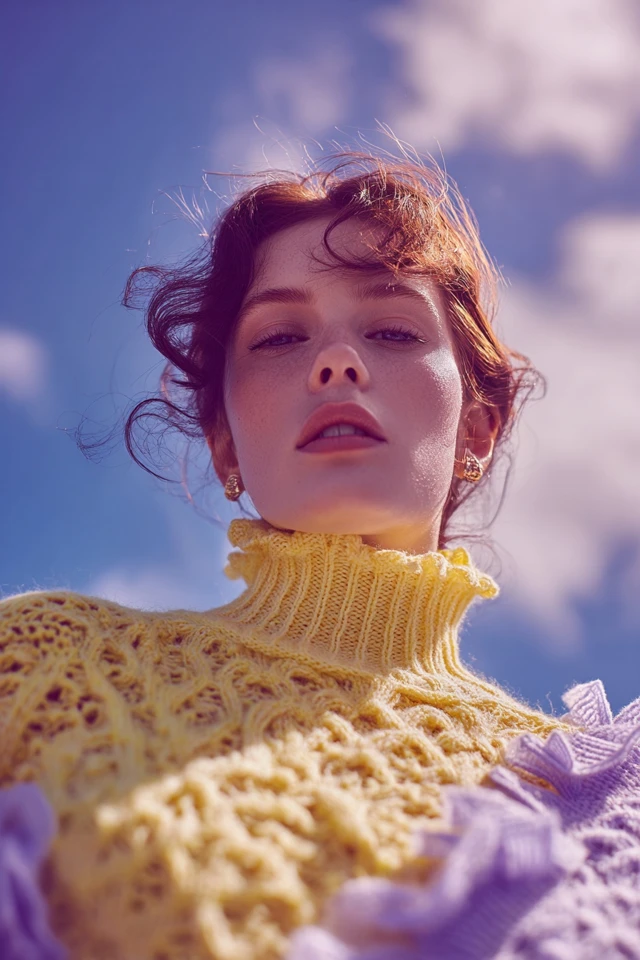
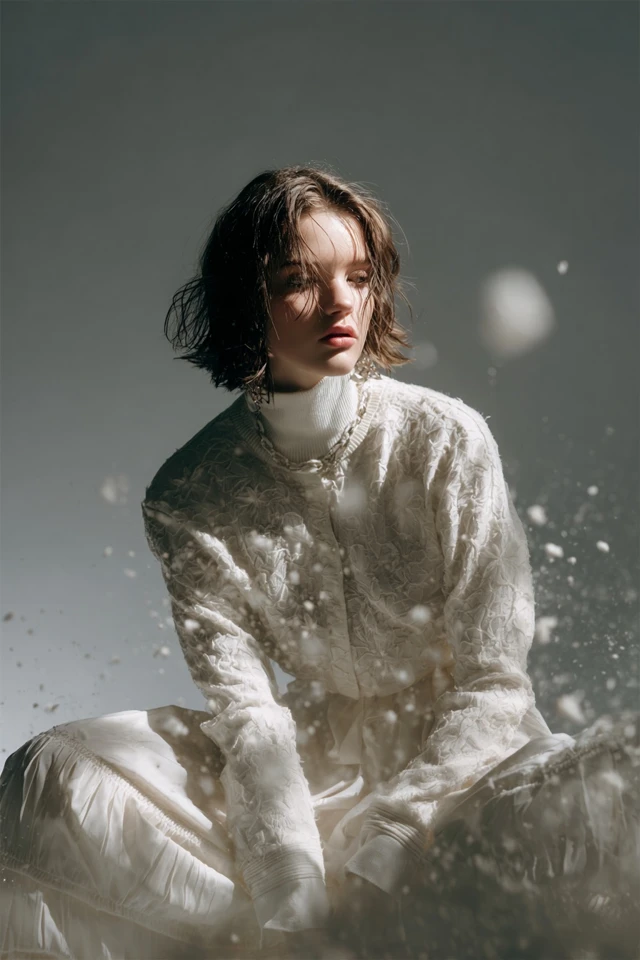
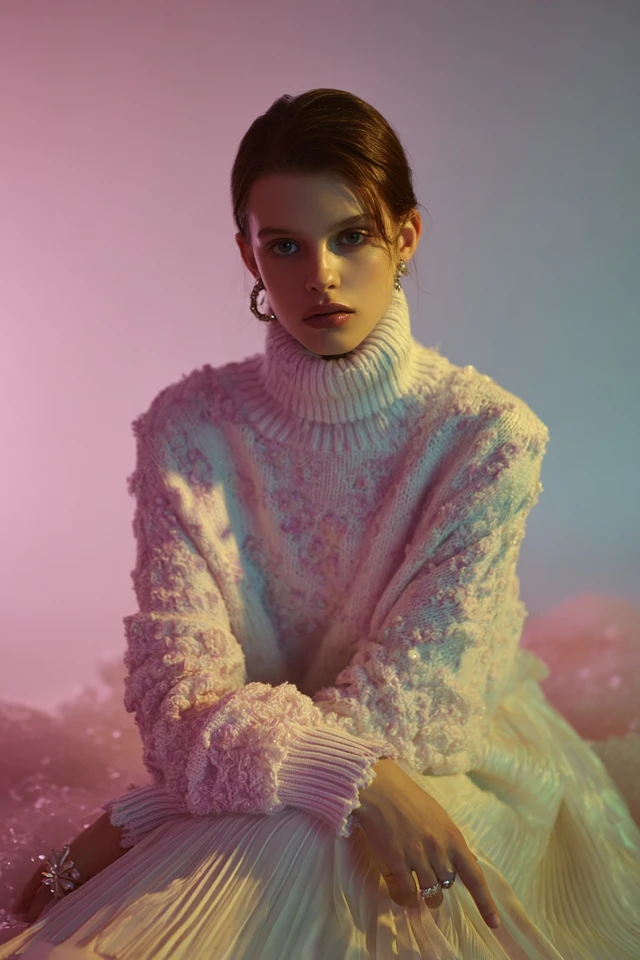
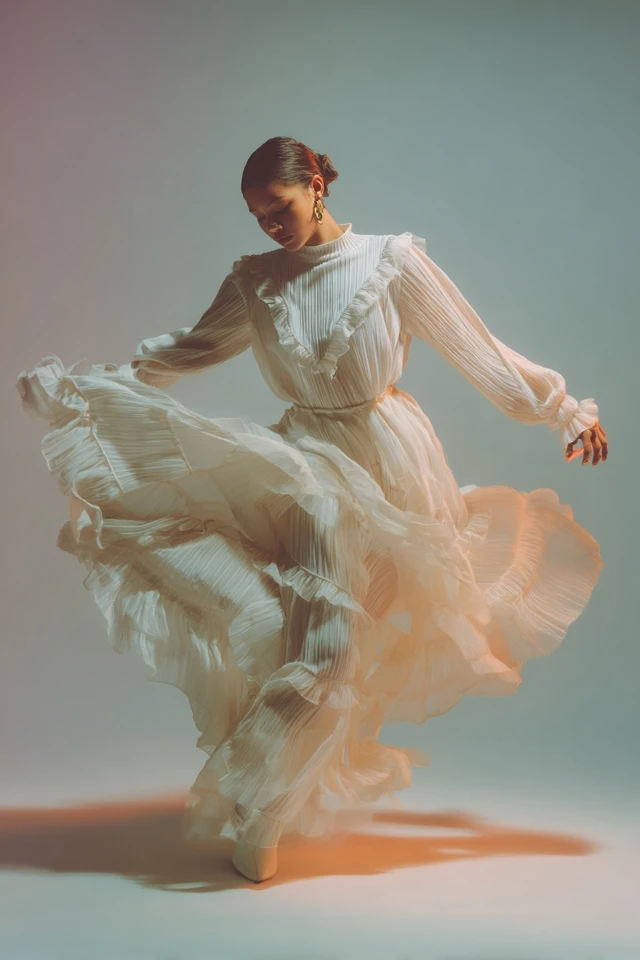
Color Psychology & Emotional Impact
Colors are silent communicators, shaping first impressions long before words are exchanged. In the context of a cottagecore turtleneck, color choices can dramatically influence mood and perception.
Warm Neutrals: Shades like cream, beige, and soft browns are staples because they evoke earthiness and comfort—qualities deeply aligned with cottagecore’s ethos. Wearing these hues can induce feelings of groundedness both in the wearer and observer.
Pastel Tones: Light lavender, blush pink, and powder blue lend a refreshing softness, often associated with calmness, kindness, and approachability. These colors have been scientifically linked to reduced stress levels, thus enhancing wearer confidence.
Muted Greens and Soft Mustards: These colors symbolize growth, vitality, and optimism. Choosing a muted green turtleneck can subconsciously signal creativity and balance, fostering a positive social response.
First-impression science suggests that color impacts perceived personality traits. For instance, blue tones convey trustworthiness, while reds can increase perceptions of assertiveness. While cottagecore favors gentler palettes, knowing these associations allows wearers to tailor their look for desired social settings—whether that’s a casual gathering or an intimate date.
For readers looking to explore further, Psychology Today’s guide on color psychology offers accessible insights into how colors impact emotions and relationships.
Personal Style & Body Type Considerations
One of the joys of cottagecore turtlenecks is how adaptable they are to a range of body types, complexions, and individual style preferences. Here are practical tips to create harmonious outfits that celebrate your unique self.
Silhouettes
- Hourglass Figures: Opt for fitted turtlenecks that emphasize the waistline. Consider pairing with high-waisted skirts or trousers to enhance your natural curves.
- Apple Shapes: Choose looser or ribbed knits that skim rather than cling. Layer under flowy pinafores or A-line dresses to balance proportions.
- Pear Shapes: A slightly cropped turtleneck works well to draw focus upwards. Pair with wide-leg pants or midi skirts to elongate the frame.
- Rectangle Shapes: Textured knits or those with decorative stitch patterns add visual interest and dimension. Layering with belted cardigans can create the illusion of curves.
Fabrics
Natural fibers like cotton, merino wool, or cashmere blends enhance breathability and comfort. For sensitive skin, softer, hypoallergenic materials prevent irritation and improve the wearing experience.
Hues & Complexions
- Warm Undertones: Embrace colors like honey, olive, rust, or cream to complement your skin’s natural glow.
- Cool Undertones: Opt for shades such as lavender, icy blue, and soft gray for flattering contrasts.
- Neutral Undertones: Most earthy and pastel tones will suit you well; experiment with varied shades to discover what feels best.
Quick Style Checklist
- Have you chosen a turtleneck fabric that feels comfortable all day?
- Does the silhouette complement your body shape while aligning with your style goals?
- Are the colors in harmony with your complexion and the mood you want to convey?
- Have you considered layering options that add versatility?
Current Trends & Timeless Classics
Fashion naturally evolves, yet some items stand the test of time through adaptability and emotional resonance. The cottagecore turtleneck is a perfect example of this balance between trend and classic.
Trending Styles: This season, expect to see turtlenecks featuring subtle puff sleeves, intricate cable knitting, and cropped lengths that allow playful layering. Color trends lean towards soft lilac, ochre, and muted sage, which can be integrated seamlessly into warm, earth-toned wardrobes.
Timeless Classics: Simple, solid-color turtlenecks in shades like cream, charcoal, or navy remain wardrobe anchors. These pieces are versatile for multiple seasons and can be dressed up or down. A finely ribbed or merino wool turtleneck is an investment in quality and lasting style.
To blend trends and classics effortlessly, try pairing a trendy lilac pullover with high-waisted beige trousers or layering a cream classic under a floral dress. This approach keeps your look fresh yet grounded, embodying the cottagecore spirit of enduring charm.
Practical Tips & Recommendations
Building an effortless cottagecore turtleneck wardrobe is both fun and functional when guided by smart shopping and styling strategies.
- Shop for Quality: Prioritize natural fibers and well-constructed pieces to ensure longevity and comfort. Seek sustainable brands that align with cottagecore’s eco-conscious values.
- Layering Magic: Use turtlenecks as foundational layers beneath pinafores, vintage-inspired cardigans, or oversized blazers. Don’t shy away from mixing textures—velvet, linen, and knitwear create appealing contrast.
- Color Combinations: Experiment with monochromatic earth tones or soft complementary hues. For example, pair a mustard turtleneck with olive green skirts, or a blush pink top with cream trousers. Using a color swatch (alt text: “Soft pastel color swatches: blush, sage, cream”) can help visualize successful matches.
- Wardrobe Maintenance: Follow garment care labels diligently to preserve shape and color. Hand wash delicate knits or opt for gentle cycle washes, and always air dry flat to avoid stretching.
- Accessorize Thoughtfully: Add vintage-inspired brooches, delicate gold necklaces, or woven straw hats to anchor your look in cottagecore authenticity.
By combining these practices, you can curate a wardrobe that feels intuitive, comfortable, and always photo-ready.
FAQs
Q1: How do I find my signature cottagecore turtleneck color?
A: Start by assessing your skin undertones and preferences. Experiment with soft pastels or warm neutrals that evoke nature and calmness. Keep a style journal to document which colors make you feel your best.
Q2: Can I build a cottagecore wardrobe on a budget?
A: Absolutely. Focus on versatile basics like solid turtlenecks and thrift for unique layering pieces. Embrace DIY customizing—adding embroidery or patches can personalize affordable finds.
Q3: How can turtlenecks be incorporated into a capsule wardrobe?
A: Choose neutral-tone turtlenecks in lightweight knits that pair easily with skirts, trousers, and cardigans. Their timeless nature makes them perfect capsule staples.
Q4: What are the best fabrics for sensitive skin?
A: Merino wool, bamboo blends, and organic cotton are excellent options. Avoid synthetic materials that may cause irritation or excessive sweating.
Q5: How do I transition my turtleneck looks from warm to colder months?
A: Layer your turtlenecks under warm coats, thick scarves, and wool skirts or pants. Use tights and boots to complete cozy, layered outfits suitable for winter.
Conclusion
The cottagecore turtleneck is more than a garment; it is a canvas upon which you can express comfort, confidence, and creativity. From understanding the psychological nuances of color to selecting silhouettes that flatter your body, each step enriches your wardrobe with intention and joy. By blending timeless classics with seasonal trends, you forge a personal style that complements your inner world and social aspirations.
Remember, fashion is ultimately an ongoing conversation between your authentic self and the world you navigate. Embrace experimentation with color and texture, and don’t fear mixing old favorites with fresh discoveries. Your cottagecore turtleneck wardrobe basics are ready to tell your unique story—one cozy, stylish layer at a time.
I invite you to share your favorite turtleneck styling tips, ask questions, and subscribe for more insights on fashion, color psychology, and dressing to impress. Together, we can nurture a community that celebrates both timeless style and vibrant individuality.

